
"I had no regrets until I met you"
Happy Together was a haunting, gut-wrenching look at love and loneliness with stellar performances by the main cast. Tony Leung Chiu Wai and Leslie Cheung played an on again, off again couple who were often lonelier when they were together than when they were apart.Ho Po Wing and Lai Yiu Fai have traveled from Hong Kong to Argentina. On a trip to see the Iguazu Falls they become hopelessly lost and Ho breaks up with Lai and not for the first time. Lai finds work as a club doorman while Ho starts turning tricks to make a living. As Lai watches Ho with other men, a deep sorrow and homesickness overtakes him. He doesn’t want to inevitably “start over” as they usually do, he wants to go home to Hong Kong. He needs to make enough money first. When Ho is beaten by one of his clients, Lai lets him in and takes care of him, but refuses to sleep with him. At a new job, Lai makes friends with Chang, a young man from Taipei, which causes friction between the two lovers.
Ho and Lai were in a “can’t live with him, can’t live without him” dynamic. Ho had a reckless streak that Lai tried to tame, but would cause Ho to chafe at the constraints. Every scene was filled with raw emotions-longing, agony, passion, and despair. While Leslie Cheung gave a wonderful performance as the erratic Ho, it was Tony Leung who captivated me with his. I’ve seen Tony in numerous films, but this was the best performance of his I’ve seen so far. He has never had a problem with the too cool for school vibe, but in this film, he tore through emotions left and right without going over the top. It was impossible to not empathize with Lai when the heartache and misery were visibly eating away at him. In a scene where Ho taught him how to dance, the desire not just for this man, but also a longing for something more, something unattainable was quite moving.
A young Chang Chen as Chang Wan brought a breath of soothing air into Lai’s life. The friendship was easy and a reminder of home. Chang had a tender scene as he tucked a sorrowful, intoxicated Lai into bed. Their friendship was a lifeline for the floundering Lai. When Chang left Buenos Aires, Lai was truly adrift and found that “lonely people are all the same.” Lai became more convinced he did not want to ever “start again” with Ho, regardless of his deep feelings for him. Ho was like the prodigal son who had to occasionally self-destruct knowing that Lai would always be there for him in some capacity.
This film had Wong Kar Wai’s trademark palette of greens, yellows, and reds along with scenes in black and white. There is no denying his aesthetic gift, but sometimes I don’t connect with the story he’s telling. Happy Together connected everything for me. The plot was thin, almost non-existent, as these men struggled to make a living and struggled to alleviate their desire to return home and to somehow survive their complex disparities. I thoroughly enjoyed the varied music, which ranged from Tango Apasionado to fittingly enough, Happy Together originally by The Turtles. The songs flowed naturally through the film as stark emotions ebbed and rose.
Happy Together’s unflinching exploration of a tempestuous relationship was hard to watch at times, but impossible to look away from. Tony Leung peeled back his stunning façade and poured out an impressive array of emotions both nuanced and heartbreakingly real. Much like the Iguazu Falls, Ho and Lai’s bond was powerful, chaotic, captivating, murky, and completely unforgettable.
8 May 2024
Was this review helpful to you?
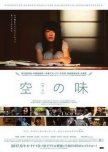
"Do you think monsters are afraid of themselves?"
Seventeen-year-old Satoko struggles with an eating disorder and sense of alienation from her family and friends as she deals with her hidden eating habits alone in Taste of Emptiness. Director Tsukada Marina drew from her own experiences in the making of this independent film. Both heartbreaking and hopeful, Taste of Emptiness didn’t shy away from Satoko’s daily confrontations with her obsessive behaviors and the desire to overcome them.Satoko and her friends, Yuko and Kanae, belong to the dance club and are preparing for a competition. The talk in the dressing room often revolves around weight and boys. At home, Satoko goes to the frig, hungry, but concerned about the calories in the food. When she does succumb to pudding she exercises afterwards. Her anxiety and OCD behaviors gradually grow worse as she begins to binge and purge. Her father notices she’s not eating but her mother chalks it up to a small appetite and the changing seasons despite Satoko’s weight loss. When her older brother realizes she's purging, the men organize an intervention at dinner against the mother’s wishes. After words held tightly for too long coming spewing out, Satoko leaves to stay with Kanae. Her problems only escalate in the new environment and soon she’s not going to school and drops out of dance. When she runs out of money, she returns home and begins therapy. While waiting on the doctor, she meets Maki, an “evening office worker.” The two become friends and spend time together. Satoko begins to understand Maki’s problems run deeper than they appeared at first glance, yet the unorthodox woman’s acceptance of her as she is bolsters her confidence.
Taste of Emptiness used an array of symbolism for Satoko’s emotions such as being underwater and wearing a Noh mask to hide her inner feelings. When she confronted her family at the intervention you could see her withdrawing into herself, the pain palpable and intensifying. Confused and scared of people discovering how confused she was, she vacillated between being angry at her family and angry at herself. “When I’m invisible, I can relax.” Satoko’s mom had to fight through her own denial about her daughter’s condition. Eventually, both mother and child worked to find a better place between them.
Reasons for eating disorders are as complicated and varied as the means for healing them and this film didn’t take any shortcuts or give any easy answers. Satoko worked with a doctor, medications, her family, and her friends. Maki’s influence on her also came as a double-edged sword though it did seem to jumpstart her healing. Taste of Emptiness was a slow paced jarringly realistic film about one teen’s search for healing and meaning as she dealt with the “thin ideal” and coming to accept she was okay even when she didn’t feel okay.
“I hope you can be who you want to be.”
“Even if I’m crazy?”
“You have to start somewhere.”
7 May 2024
Was this review helpful to you?

"Impossibilities are what make this world interesting"
The Sealer was a short drama involving a secret organization that seals blades filled with “filth” such as malice and hatred and causes the humans wielding them to disappear. A reporter who can see the evil black haze emitted from the demons and swords becomes involved with the group and aids in needed research to help one of their own.The premise of the story was interesting if dark. Anyone dealing with anger or other strong emotions could become a victim of the sword and then be turned into mindless killers, even good people. The Sealers absorbed the “filth” from Blades of Filth until they could no longer contain that “filth”, then they were eliminated lest they become demonic as well. Not a great retirement plan or selling point for new candidates. Over the centuries, no one figured out how to resolve some of the more problematic issues. Karen, the maker of the scabbards that sealed the evil blades, believed that scabbards could be made that would save the humans attached to the blades and grant them the ability to atone for their deeds instead of disappearing. The blades were similar to Mordor blades, wounds caused by them would never heal.
Most of the characters were flatly drawn and acted. The characters wore basically the same clothes throughout the episodes. Sanjo, the overly earnest reporter, needed a pair of trainers as many times as she fell down and couldn’t get back up. In fact, characters falling down and being unable to stand afterwards was a common theme. I counted at least nine times it happened, as if they were all part turtle with no way to get up once down.
The Sealer was entertaining for a short drama, but being so short often left the characters underdeveloped as well as the story. There were times characters just stood around and watched what was happening with little to do. Many of the action scenes felt redundant, yet the stakes were high. For the most part The Sealer kept my attention except when I wasn’t wondering what evil spell caused people to freeze on the floor instead of attempting to escape a sword wielding demon.
6 May 2024
Was this review helpful to you?

Didn't blow me away
Police Story 2 brought back much of the cast from Police Story, including the divine Maggie Cheung. Even with two different sets of bad guys and some pyrotechnics, the story dragged badly in comparison to the first and third movies of the series.Chan Ka Kui finds himself demoted to traffic cop after the destructive events of the first film. To make matters worse Chu Tao is given a compassionate care release. Chu's assistant Koo and his henchmen harass both Chan and May repeatedly. After a run in with the baddies in a restaurant and a children’s playground, Chan is called on the carpet by his bosses. This time he’s had enough and resigns. He no more than turns his badge in when blackmailing bombers threaten a company by blowing up one of their malls. His superiors talk him into coming back to work and he joins an elite surveillance team to track down the evil doers.
PS2 struggled with its identity. The murderous bad guys from the previous film were played up for comic effect in this one. Honestly, most of the scenes committed to Charlie Cho’s Koo felt more like padding and did nothing to drive the narrative forward. At 2 hours, the movie was already bloated for a 1980’s action flick. While there were a couple of good fights as was expected from a Jackie Chan movie, there wasn't the same excitement as in PS1 and 3. Given the outtakes, several people were hurt including Maggie Cheung. She endured a serious head injury, serious enough she couldn’t finish the film which was obvious because after the stunt you never see her face again. Much of Chan’s stunts in the last thirty minutes involved being set on fire. There were two impressive explosions but buildings blowing up don’t make up for terrible pacing and lackluster storytelling.
There were several interesting guest appearances. Wu Ma showed up as a mall cop. Lau Ching Wan made a brief showing as a CID officer. Charlie Cho’s main reason for being in the film seemed to be for the comic effect of having his glasses invariably broken in all of his scenes, a running gag from the first movie. Benny Lai was one of the official stuntmen from Jackie’s company and provided a sound final opponent for Chan even if his deaf-mute character pushed the limits of poor taste. Mitsubishi trucks and Canon cameras had more scenes than most of the supporting actors. Full moon alert---some of the bit players appeared to have been hired for their tight butts for a comic scene when May chased Chan through the men’s police showers.
While there were entertaining fights and moments, especially in the last thirty minutes, Police Story 2 bogged down for much of the other ninety minutes going back and forth trying to decide if Chan was a loose, reckless canon or a hero. I’m sure many Jackie Chan fans will find this film a blast. But for me, instead of a thrilling, explosive story, the bouncing around of villains and bland dialogue caused the movie to fizzle.
4 May 2024
Was this review helpful to you?

"The world has changed." "But people don't change"
Jeon Woo Chi: The Taoist Wizard was an uneven but entertaining movie about a mischievous Taoist sorcerer who battled monsters in 16th century Korea and 500 years later. A magical flute that can control the monsters was at the center of a battle between good and evil as Woo Chi and his trusty sidekick Cho Rang Yi attempted to put the monsters back in their gourds.Woo Chi enjoys bringing attention to himself even when he’s doing it for a good cause and also likes tweaking the noses of the rich and powerful. Armed with magical talismans he performs amazing tricks all of which are frowned upon by his master and sidekick. Rang Yi appears human but in actuality is a dog who can also take the form of a horse. One night Woo Chi crosses paths with another Taoist master, Hwa Dam, and three bumbling shinsuns. These shinsuns are the immortals who accidentally released monsters imprisoned in a heavenly realm by losing track of time while Pyohundaeduck played his magical flute keeping them under control. When the monsters escaped, the flute was contaminated with evil spirits. Both it and Pyohundaeduck fell to earth. The flautist lost his memory and disappeared. Hwa Dam and the shinsuns are searching for the flute. Woo Chi in on the hunt for a bronze sword that will help him become more powerful. After Woo Chi’s master is murdered Hwa Dam and the shinsuns blame Woo Chi and lock him into a painting along with Rang Yi and half of the broken flute. 500 years later the shinsuns release Woo Chi when Hwa Dam is unavailable to fight two dangerous escaped monsters.
Kang Don Won was entertaining as the cocky sorcerer, without his charisma this film would have fallen flat. Yoo Hae Jin is a pleasure to watch and always brings his all to every role even when playing animals. Kim Yoon Seok gave a delightful menace to Hwa Dam. And three competent character actors took on the Three Stooges of heavenly beings. Despite being the FL, Lim Soo Jung wasn’t given much to do until the end.
There was plenty of action both magical and down and dirty fighting between Woo Chi and the monstrous rat and rabbit and their human forms. Wire work abounded and Woo Chi sustained hits even a sorcerer shouldn’t have gotten up from. The CGI was rudimentary more often than not, even for 2009. I didn’t have a big problem with the mediocre CGI but I did have a problem with the editing and lapses in narrative. Some of the story was needlessly confusing and contrived. The actors and action managed to smooth over the ragged seams most of the time.
Though a romance was awkwardly inserted, it didn’t work well for me. This was more a story of a sorcerer and his dog. While Jeon Woo Chi was a lighthearted magical romp, its failure to tie several narrative elements together kept it from casting a spell over me.
3 May 2024
(7.25)
Was this review helpful to you?

"The soil of Burma is red. So are the rocks."
The Burmese Harp was a WWII film based on a children’s book by Takeyama Michio from 1946. The book was written to help young readers come to terms with Japan’s defeat while demonstrating Buddhism’s emphasis on altruism. Music featured prominently with both the Japanese and British soldiers singing as well as the playing of the titular instrument. This was the kindest, gentlest war film I’ve ever seen as the Japanese soldiers came to grips with their country’s loss and hoping to see home again.A small group of Japanese soldiers are making their way through Burma (Myanmar) to Thailand when they are captured by the British. They learn the war has been over for three days. Capt. Inouye is unsure of what lies ahead of them but says they will face it like men and they will face it together. The Allies ask for a soldier to try and talk a group of holdouts on Triangle Mountain into surrendering. Inouye sends the harp playing Mizushima Yasuhiko and tells him to catch up with them at the Mudon POW camp 200 miles/322 km from where he will be after the mission. Unlike Inouye and his group of singing soldiers, the fanatical soldiers on the mountain don’t care that the war is over. They want to die for their Emperor and call Mizushima a coward. The Brits hit the hideout hard and Mizushima is the only one to survive. A traveling monk rescues him and nurses him back to health. While the monk is bathing in the river, Mizushima steals his clothes and later shaves his head so that he can make the arduous trip back to his men. Along the way he repeatedly comes across the decaying bodies of Japanese soldiers left where they lay. He buries a handful before continuing his journey. When he reaches the Buddhist monastery at Mudon he teaches a young boy a few new chords on the harp (Saung). The next morning he hears singing and finds the Allied hospital staff at the camp singing and praying over a Japanese soldier they have buried. Something inside of him fundamentally alters at this sight and instead of joining his men he turns back to bury the dead. Meanwhile, his men grow ever more concerned at his absence.
This film fell more into fable or fairytale than realistic war drama. Director Ichikawa showed the ravages of war and starvation in his excellent film Fires on the Plain (1959). While the book supposedly touched on Japan’s responsibility for the war and was critical of Japan’s militaristic actions and mindset, this movie veered away from those criticisms. Since the core concept of the film was for children--comfort women, the Nanjing Massacre, and dire reality for Allied prisoners in Japanese POW camps where 40% died was left out. This was a film about healing, friendship, and spiritual transformation in the face of defeat while not shying away from the staggering loss of life from war.
Music played an almost magical role for the soldiers in healing and binding the men together. It also brought out the shared humanity between the Japanese and Allied personnel. “Home, Sweet, Home” was sung by both groups and at one time all together. As Mizushima observed the scattered bodies with birds feeding on them, “O, Sacred Head Now Wounded” played in the background. In typical 1950’s fashion, the men sounded like a professional chamber choir when they sang and Mizushima’s battered saung provided the clear, dulcet tones of an orchestra’s multi-octave harp.
The soldiers longed for home and longed for peace. As they dreamed of returning to their lives in Japan they had no idea of the drastic changes ahead or that many places would be unrecognizable. Mizushima had been reborn while assisting the dead to rest in peace. He had to decide whether to stay in Burma and mend the past or go home and help rebuild his country. While this film may have shown a more idyllic version of humanity it couldn’t hide the horror and monstrous cost of war and didn’t try. This type of meditative, comforting film in the face of upheaval and how humans choose to react and grow was right up my alley. I thoroughly enjoyed The Burmese Harp. “…our work is simply to ease the great suffering of the world…to find the strength to create peace by one’s own example.”
2 May 2024
Home, Sweet, Home (For those too young to be familiar with it)
“Mid pleasures and palaces though we may roam
Be it ever so humble, there's no place like home
A charm from the skies seems to hallow us there
Which seek thro' the world, is ne'er met elsewhere
Home! Home!
Sweet, sweet home!
There's no place like home
There's no place like home!
An exile from home splendor dazzles in vain
Oh give me my lowly thatched cottage again
The birds singing gaily that came at my call
And gave me the peace of mind dearer than all
Home, home, sweet, sweet home
There's no place like home, there's no place like home!”
Was this review helpful to you?

"Whatever happens, we'll come back for you"
Onoda: 10,000 Nights in the Jungle told the true story of one of the last Japanese holdouts after WWII. Japan surrendered on September 2, 1945. The war ended for Onoda Hiroo 29 years later on March 9, 1974. During his training as an intelligence officer he was told he had to survive at all costs and that "Whatever happens, we'll come back for you.” Onoda learned the hard way that the military was not as loyal to him as he was to the mission.“We will be back for you. We will be back. Whatever happens---survive!”
Late in WWII, Onoda Hiroo fails pilot school because he has a fear of heights and dying. He’s recruited to train as an intelligence officer and in guerilla warfare in December 1944. Before he leaves, his father (mother IRL) gives him a dagger to kill himself with rather than be captured should the need arise. When he arrives on Lubang Island none of the other officers will help him with his mission which was to disable the airstrip and port. Most of the soldiers are hungry, demoralized, and/or ill. The Americans take the island shortly after his arrival. Soon the only Japanese soldiers not dead or captured are Onoda and the three men he chose to work with him---Kozuka, Shimada, and Akatsu. Believing they must hold their ground until more Japanese forces arrive, they set up camp in the jungle and cause damage to the farmers’ fields in order to keep the locals afraid of them. They subsist on whatever they can find or steal, taking up residence in caves or homemade huts. The small group of holdouts refuse to believe the war is over and patiently wait for reinforcements.
“Try to change the way you see things”
Two different actors played Onoda and his second in command, Kozuka. They all performed admirably as the characters aged and learned to survive in the jungle and rely on each other. The film confined most of the shots to the men and their duties which displayed their arduous methods of staying alive. Bound by their limited outside contact, their lives seemed incredibly sad. They were completely isolated and separated from family and loved ones. As much as the film focused on the holdouts it would have been nice to gain the locals’ perspective of the killers in the hills and the fear they instilled for a time.
“They know that what is complicated and even incomprehensible, sounds true!”
My first thought when Onoda’s father handed him the dagger and told him, “Your body is the Fatherland. Do not let it fall into enemy hands,” was the Spartan mothers’ declaration to their sons, “With your shield or on it.” Ordered not to die and trained to unconditionally obey orders, unwilling to return home defeated, and determined to prove himself, Onoda’s psyche was trapped in a nightmare in the jungle of Lubang. The outside world and even loved ones attempted to convince Onoda that the war was over, but he could only see conspiracy theories everywhere he looked, convinced that Japan was still fighting. Eventually, he had access to newspapers, magazines, and a transistor radio but believed it was all an elaborate ruse to trick them. At some point, Onoda’s rigid obedience and views appeared to come across as an over-inflated sense of self. Why would the enemy go to such extraordinary lengths to trick one man? If he was that important they could have sent in a wave of soldiers to kill him or just bombed the jungle. Onoda had a high level of cognitive dissonance as he clung to his beliefs in the face of harsh opposing facts.
“What if we killed people we’re no longer at war with?”
Onoda and his men were resourceful and resilient. The youngest left after nearly 5 years and another was killed after almost nine. When the second in command was killed after 27 years of holding out, it seemed to chip away at Onoda’s confidence. Despite their incorrect assessments, Onoda and his men were a product of their training and propaganda. They truly believed they were serving the greater good by holding their position on the island. It took as much determination as denial to be separated from family and friends, to live on roots and fruit often with only rudimentary shelter for nearly three decades. In 1974 a Japanese adventurer discovered Onoda and befriended him. The young man caused Onoda an existential crisis as the holdout could no longer deny that Japan and the world had changed. The military bore responsibility as well. The loyal soldiers killed 30 inhabitants over the years. Two of the four died pointlessly and Onoda lost 30 years of his life because no one cleaned up the mess they created. These soldiers were imbedded on islands in the last months of the war when the writing was on the wall. VE Day occurred not long after Onoda was stationed on Lubang and Japan surrendered in August of 1945. All it took was for Onoda’s superior to come back for him. Unfortunately, for Onoda, his men and the people of Lubang, it took nearly 30 years to do so.
30 April 2024
Was this review helpful to you?
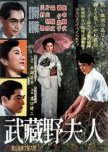
"It's ridiculous!"
Director Mizoguchi Kenji threw me for a loop with The Lady of Musashino. Unhappy marriages, infidelity, and premarital sex abounded in this postwar film. The main couple exemplified the changing lifestyles and social norms being explored as Japan tried to find its footing after everything came tumbling down. Michiko was as traditional in her morals as her husband was laissez faire regarding his.After fleeing Tokyo during the bombing, Michiko and Tadao go to live with her parents. Her family comes from a long line of samurai and the property has been in the family for ages. After her parents die, Michiko inherits it. Three years after the war, her cousin Tsutomu finally arrives home after having spent time in a Singapore POW camp. Tadao is a professor who believes that infidelity is an expression of free will and proceeds to live out that philosophy. He encourages Tsutomu to live in town while attending university so that he can enjoy as much sex as possible. Michiko’s cousin Ono and his wife Tomiko have their own open ideas about marriage fidelity as well. Both Michiko and Tsutomu have a love for Musashino which develops into feelings for each other. Will Michiko’s rigid morality stay in place in the face of handsome Tsutomu’s advances?
Mizoguchi at first seemed to be conveying the idea that women were treated unfairly in marriage and divorce. Tadao was thoroughly reprehensible even as he lauded the new law being passed that would no longer make it a crime for women to commit adultery, men could continue to do whatever they wanted as always. It was difficult to be invested in this story as most of the characters were selfish and unlikeable. Even Michiko’s noble idiocy began to wear thin. Tadao made a mockery of their marriage and her and even tried to leave her homeless yet she still made excuses for him. While it was true that women could become boxed into a corner with few exits, Michiko could only see one due to her narrow views. Like me, love-stricken Tsutomu had trouble understanding her train of thought. When she tried to explain why they couldn’t be together at the moment, “If there are more and more unhappy people, morality will change,” it wasn’t long before Tsutomu replied, “It’s ridiculous!” The moral of the story was pretty convoluted by the end.
What was effective in this film was the camera work. This was a magnificent film to look at even in black and white. Tsumoto’s arrival through the trees and fog was stunning. I would love for it to have been in color in order to bring out all of the hues of the forest and water as Michiko and Tsutomu explored Musashino on several occasions.
Mizoguchi repeatedly stressed how “everyone is running around in a fever with no morals.” The societal anxiety of a postwar Japan was felt in nearly every scene. The decline of traditions represented by the old samurai estate appeared to not only be caused by Western influences but as a reaction to a way of life that led up to the war and during it. Near the end of the war Michiko was given cyanide for the family by the military when she went out to buy their rations. While she thought about taking it, others around her told her how cowardly and ridiculous it was and the same response was given when a family member died “honorably” by taking his life.
The Lady of Musashino was an uneven melodrama and criticism of changing mores. The memory of the “simple, green, beautiful” Musashino that had helped Tsumotu endure while being a prisoner was fading as quickly as the old way of life. Faithful Michiko arduously clung to the traditions of the past and paid a terrible price for her stubborn morality and sense of duty.
29 April 2024
Was this review helpful to you?
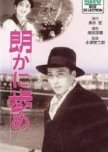
"I may be a bad man but I can be sincere"
Walk Cheerfully was the second of Ozu Yasujiro’s crime films from the 1930’s. Before he endlessly contemplated how modernization affected the traditional family, he directed this film about a gangster who fell in love with a good woman and turned his life upside-down.Kenji the Knife and his crime buddy Senko work together to steal wallets and blackmail people. Kenji is involved with a hard-hearted dame named Chieko. One day he sees a beautiful woman picking up a diamond ring in a store. As fate would have it afterwards, he almost literally runs into her and her sister in his car and gives them a lift. From then on he is completely smitten with Yasue while his friends think he is playing her for her money. Yasue has her own problems at work as a typist due to a pervy boss who thinks she would jump at the chance to be with him. Her mother advises against her quitting as she is the sole breadwinner in their little family. Kenji and Yasue begin to see each other until Chieko tells her what he does for a living. Kenji has to decide if he loves Yasue enough to go the straight and narrow for her.
This early Ozu film would be hard to peg as one of his. The simplest reason was that he was not the screenwriter for this film as he was for his more famous films. His directorial style was unlike his post WWII films, too. There was a great deal of movement as he hadn’t solidified his filming from the mat style. He was still in his filming feet stage as there were at least three scenes with people’s shoes. While each frame was well composed the sets reflected Kenji’s grittier lifestyle in lieu of the picturesque compositions he would use later. People talked more naturally instead of staring head on toward the camera. There were still the geometrically inspired shots and loving attention to everyday objects. This film had a light comedic touch often shown through the gangsters walking and dancing in sync.
I enjoyed this film more than Dragnet Girl which revolved around a gangster falling in love with a good traditional woman, too. Like that film, Yasue wore traditional clothes and the gangster moll wore western attire. Takada Minoru was suave as the gangster wooing Kawasaki Hiroko’s Yasue. Yoshitani Hisao as Kenji’s friend Senko had a comfortable chemistry with Takada. The buddies supported each other in their life new goals while a third crime partner as well as the moll couldn’t let go of the criminal way of life or Kenji. Sakamoto Takeshi who appeared in several Ozu films through the years portrayed Yasue’s lecherous boss.
For a silent film, Walk Cheerfully was an easy watch as the story was straightforward. A bad boy falls in love with a good girl. He changes his way of life for her and must decide when things get tough whether to fall back into his old ways. The intertitles made the story comprehensible and the actors gave thoughtful performances that clearly showed their emotions without overacting. While there were a few slow areas, overall the film was an enjoyable watch.
28 April 2024
Was this review helpful to you?

"I won't go anywhere without you"
Circle was a 2017 Sci-Fi drama focused on the lives of a set of twin boys/men with each episode split into two parts. The first half was set in the then present of 2017 and the second half in 2037. This structure doesn’t always work with different actors playing the same characters in different times as too often I become invested in one story and not the other. However, I found this format quite effective for this suspenseful drama. In fact, they even go back 10 years to when the twins were young boys in several episodes and that worked as well.Twins Woo Jin and Beom Gyun have a close encounter of the third kind one night along with their father. When their father seemingly abandons them, the boys handle the loss differently. Beom Gyun acts out and ends up serving time in a psychiatric hospital and later, jail. Woo Jin studies hard at university and labors to take care of his grandmother who lives in a nursing home. When students on campus begin committing suicide, both boys will become embroiled in a sinister plot neither was prepared for. In 2037 Kim Joon Hyuk is a detective at the Gangnam police department. The air quality has deteriorated significantly and personal oxygen devices are necessary at times. Seoul has lost 50% of its population. In a separate area lies a secured population living in what is called Smart Earth where there is no crime and the wealthy live easier lives. The only price is that everyone must have a chip installed behind their ear that regulates their emotions, and possibly more. When the first murder occurs after 5000 days without a crime, Joon Hyuk goes to investigate and discovers the case may link him to his past.
While there were times the production values appeared low, I didn’t mind. A compelling story that drew me in with interesting characters covered over several plot holes and some poor direction choices. I wasn’t tempted to fast forward or skip about. The brothers’ ordeals and devotion to each other touched me. Both timelines had value and neither ran out of steam until the worlds finally collided. While there were some romantic feelings between the twins and the young women in their lives, there weren’t any real romances, a bit of relief for this drama.
Circle only reinforced my belief that South Korea has the best child actors. The two boys who played Woo Jin and Beom Gyun as children were charming and emotionally engaging to watch. I have a soft spot for Yeo Jin Goo and he was lovely as the devoted brother Woo Jin. I was not familiar with Kim Kang Woo and enjoyed his emotional turn at Joon Hyuk. Gong Seung Yeon as the enigmatic hacker Han Jung Yeon did a good job as well. Some of the supporting cast was not as strong.
It’s been a long time since I’ve enjoyed a Kdrama this much. Most have been forgettable in recent years. Instead of throwing pretty people and an encyclopedia of tropes at the screen hoping something would stick, Circle’s writers crafted an entertaining drama that came, well, full circle. I will remember this drama and may go back and visit it again.
27 April 2024
Was this review helpful to you?
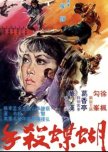
"You look familiar"
White Butterfly Killer falls deeply into the woman wronged revenge kung fu flick genre. Hsu Feng played the woman who had survived the death of her grandfather and sexual assault by a gang of bandits. After six long years she finally comes face to face with them and prepares to take them out one by one.The White Butterfly owns an inn on the Leopard Mountain where all sorts of ruffians hang out. She and her girls who are trained in kung fu serve the customers and take down any men who cause trouble in her place. One evening a familiar face walks in. She recognizes him as one of the gang members who assaulted her and killed her grandfather. The White Butterfly enlists her trusted sidekicks to help her destroy the gang that set her life on a new course. In that gang, is one man who had helped her escape. Would he help her again or bring about her death?
White Butterfly Killer was a low budget Taiwanese movie. Much of the filming took place on a rundown location and a dusty road which lent an old west feel to it. The setting would alternate between day and night depending on who was on screen. The film opened with a fight between two factions that ended up at her inn as she took in a wounded inspector. This was never really brought up again. An inspector might have been pertinent with a band of vile outlaws staying under the same roof, but there you go. Somewhere through the years the sides have been cropped off the film which always makes the action concentrated in the center.
Hsu Feng may not have been a martial artist but kept up with the men she fought quite well. Her fighting was no worse than many of the extras with the choreography provided and her acting was stronger than some of the women in kung fu movies at the time. The “good” guy in the gang played by Kou Feng was a strange character. He hated some of the things the gang did but owed his life to the leader, his adoptive father. He encouraged Hsu’s character to just leave everything in the past. “Those who kill, will be killed.” Somehow that line is almost never used on men seeking justice/revenge for wrongs. And the ending drove that point home in case women didn’t catch it. Had it not been for the downer of an ending I might have rated this slightly higher.
The White Butterfly’s philosophy reminded me of the lyrics to The (Dixie) Chick’s song---
“I’m not ready to make nice. I’m not ready to back down.
I'm still mad as hell, and I don't have time to go 'round and 'round and 'round
It's too late to make it right, I probably wouldn't if I could
'Cause I'm mad as hell, can't bring myself to do what it is you think I should”
24 April 2024
Was this review helpful to you?

"We live and we die"
Shogun is based on the popular novel by James Clavell which in turn was very loosely based on historical events from Japan around 1600 C.E. I devoured the book years ago and watched the original mini-series starring Richard Chamberlain and Mifune Toshiro. I have been both excitedly and trepidatiously waiting for this updated version to come out. There were some improvements and also disappointments with the latest rendition.“Why is it those who have never been in battle are so eager to be in one?”
English pilot John Blackthorne is one of a handful of survivors aboard the Dutch ship Erasmus that lands in a Japanese fishing harbor. He and his men are taken prisoner by the village’s manager, Omi. Elsewhere, Lord Toranaga is called to the Osaka castle to meet with the other four regents of the Taiko’s heir who are bent on taking him down. He tells them he has no intentions of starting hostilities with them, but they intend to force him to commit seppuku. Back at Ajiro, Omi and his uncle and lord, Yabushige, decide the ship and its weapons might help them to make allies when the war starts. Though they are vassals of Toranaga they believe him to be a dead man. Before they can put any plan into action Toranaga’s right hand man, Hiromatsu, shows up laying claiming to the ship and its contents for Lord Toranaga, including Blackthorne. Toranaga has Mariko serve as Blackthorne’s interpreter as they can both speak Portuguese. All three, Toranaga, Blackthorne, and Mariko will face death and deception on numerous occasions and will have to use all of their abilities to change the fates laid out before them. The Portuguese and changing alliances of the regents and the heir’s mother’s influence are a powder keg of explosive political desires.
“A woman must stare without fear into the cruel eyes of fate and make herself seen”
Blackthorne was disappointing in this version of Shogun. Gone was the inquisitive and crafty personality along with the better relationship with Toranaga. As played by Cosmo Jarvis, he came across as a punch-drunk prize fighter. The slow build up in the book to understanding the language and world around him seemed fast tracked. Also, the key moment when his mental shift went from English to Japanese in the book was disappointingly left out. The scene would also have bookended Mariko’s emotional scene in the 9th episode. That key scene was also what caused the bonding between him and his interpreter. Shoving it in near the end of the drama felt awkward. Another awkward development was that it took a moment to figure out that when people were speaking English, it was supposed to be understood as Portuguese. In the book Latin, English, and Spanish were also spoken, so I suppose it simplified things for the actors and writers, and especially for English speaking audiences and making it more accessible to them to use just the one language. Okay, rant over. Mariko was more severe in this interpretation of her character, but she was as always highly capable and intelligent, understanding the political undercurrents of people’s actions. In fact, Mariko’s actions were as important and vital to Toranaga’s mission as any man’s, maybe more so. Like Toranaga, she was thankfully introduced earlier in this drama than in the book. There were other women who played important roles—Fuji (Fujiko) the reluctant but devoted consort, Kiku the courtesan, and Ochiba the heir’s plotting mother.
“She hides herself in the sun. Conserves her energy, waiting for her moment. You might never know she is there.”
What was well done was that they didn’t just show the story from the Englishman's perspective as an introduction to Japanese society and history. Much of the drama was in Japanese and though the political maneuverings were narrowed down for the small screen, many of the primary characters were fleshed out. Sanada Hiroyuki as Lord Toranaga gave a quietly powerful performance as the most cunning man in Japan. Toranaga was introduced early and used often to exploit his screen presence. Outwardly, Toranaga proclaimed he had no desire to be Shogun, but he used his extensive network of spies to lay in place a long-term plan to do just that. As a falconer, he broke many men to his fist. Everyone was a possible enemy and he kept his plans in his secretive heart. He even manipulated disasters to his benefit, always knowing when to use his human chess pieces and when to sacrifice them. The English pilot, Anjin, came at the right time, a chess piece that might prove valuable. Sanada’s scene with Nishioka Tokuma as Hiromatsu when all seemed lost was one of the best and most touching of the drama. The two actors traded deep feelings with flickers of their eyes and micro expressions that conveyed the depth of their friendship, loss, and commitment.
“Some are born under a banner of greatness, others must claim it”
The sets and costumes were luxurious. I wish they hadn’t been so committed to using blue filters because it looked as if the land of the rising sun was perpetually in twilight and fog. There was gore, but more for the shock value of the realistic violence without being overly gratuitous. There were scenes of sexual intimacy that also didn’t delve into gratuity. But fair warning, the writers weren’t afraid to use Clavell’s salty language.
“Loyalty does not have an end”
Despite some of my reservations about Blackthorne’s character and actor, and a few of the changes made to the story, I enjoyed this drama. The production values were of a high quality for television. Clavell had a great regard for Japan despite having been a POW during WWII. It was clear he felt Blackthorne was indeed the barbarian in need of civilizing as evidenced when the pilot met his crew later in the drama. The original mini-series didn’t subtitle the Japanese dialogue so that the audience would be as lost as Blackthorne. This time, we were treated to what was going on with the different characters as they made allies, betrayed each other, and played a dangerous game to have their man become the next Shogun or as in the case of the Portuguese, do whatever was necessary to maintain their monopoly in the region. And there were those like Yabushiga constantly trying to play both sides against the middle to survive the coming storm. Having read the book and watched the original mini-series when I was much younger, I am favorably biased toward this story. This was not a white savior tale, the book and the drama tell you who was pulling all the strings. As did the historical figure he was based upon, Blackthorne had his uses, but ultimately this was Toranaga’s journey to becoming Shogun.
“If I could use words
Like scattering flowers and
Falling leaves
What a bonfire my poems
Would make”
-Mariko
23 April 2024
Edit-I go back and forth on the rating for this drama. 8.75 If Cosmo had done a better job this would have scored much higher for me.
Was this review helpful to you?

"Big stories, like life, get out of control"
Gone with the Bullets was loosely inspired by the real-life events that led to China’s first film. I say loosely because very little in this film was realistic from the opium induced car ride in the sky to the cartoon reenactments of a supposed crime scene. A kaleidoscope of primary colors doused the screen in a variety of manners. The realistic elements were the dangers of the court of public opinion and how films could be utilized for propaganda.Ma Zouri is a fixer and a con artist extraordinaire. When the 7th son of the local warlord comes to him for help, Ma smells an easy mark. He and his partner, Xiang Feitian, decide to use Wu Qi’s money to hold the largest courtesan contest in the world, open to all ladies of the evening. The pageant is shared over the radio and filmed by the warlord’s 6th child, Wu Liu. The beautiful Yin Wanyan, and Ma’s lover, wins after promising 30 men she will entertain them and let them discover her “virginity.” The newly crowned President asks Ma to marry her which he refuses. They go on an opium induced car ride after making up. The next morning Ma wakes to find the car turned over and Wanyan dead. He runs to Wu Liu for help as he’s wanted for murder. During his two years on the run, he discovers there is a lurid play based on Wanyan’s death with audience participation.
"When the fake becomes real the real often becomes fake"
The film opened to music from 2001: A Space Odyssey, quotes from Shakespeare’s Hamlet, and an homage to the Godfather. It didn’t stop there. Numerous movies, events and songs were used regardless of time and circumstance. One contestant sang Summertime by Gershwin which wouldn’t be written for another decade when it was used in Porgy and Bess. The ode to motherhood also looked suspiciously like something out of 42nd Street. Reality and memory blended at times making it hard to tell what was real.
"We have to go fast to be nowhere"
Director Jiang Wen also starred as Ma Zouri with the capable Ge You as the duplicitous Xiang. An ethereal Shu Qi brought Wanyan to life and Jiang’s wife, Zhou Yun, was marvelous as Wu-6th aka Wu Liu. No expense was spared on the opulent sets and luxurious costumes. The talent portion of the contest was filmed on a huge stage with numerous scantily clad dancers in well choreographed dance numbers. I was surprised to see so much skin and gratuitous crotch shots in a Chinese film. Even more surprised in a fan dance number filmed from above where the dancers’ fans provocatively looked like vaginas. There were also poop jokes, self pleasuring, and a prisoner threatened with being “hammered” by a horse.
“The audience is always right.”
The story wasn’t always cohesive in this allegory or spoof of the movie industry and lawless land governed by corrupt foreign entities and warlords. “Love is nice but violence makes money!” Theater reenactments of the crime honed in on the violence the audience wanted to watch. After seeing the performances their minds were made up to Ma’s guilt. No trial, no witnesses, no evidence, only the court of public opinion for what would be the final show to be filmed by Wu Liu. And those in power saw no reason to not give the people what they wanted if it benefited them. Reality is easily manipulated on film in Jiang’s wink to propaganda. Gone with the Wind, I mean Bullets, was a strange but entertaining film that focused on one man’s downfall precipitated by his own hubris and also, “no good deed goes unpunished.”
18 April 2024
Was this review helpful to you?
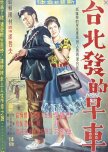
"There will be no end to the sorrow"
Early Train from Taipei is one of about 200 Taiwanese language films to have survived that were made between 1955-1970. This film was popular during its day and has been restored with only a few flickering skips still evident. There was no doubt what type of film this was going to be during the intro when an artist tells his friend there is a sad story behind two disparate paintings of the same woman. While I can appreciate its place in history, the endless melodrama and flat characters caused my interest to wear thin by the end.Siu Lan and Hue Thao are two beautiful people who live and work in the countryside and love each other. Siu Lan’s father died leaving her ailing mother in deep debt. When the creditor comes calling demanding payment, Siu Lan asks a friend to find her work in Taipei. The work turns out to be as a taxi dancer. Within a couple of weeks, she’s sending significant money to her mother to help pay down the debt. Hue takes the train to visit her but derides her for her choice of employment implying she needs to go home. He leaves her a note and catches the train, hiding from her when she follows him to the station. Siu Lan attempts to quit but her boss does not handle her resignation well, and from there on her life takes a decided turn for the worse.
A heavy-set couple back home brought comic relief whenever they encouraged Hue to visit Sui Lan. But that laughter was soon drowned in a torrential flood of tears. Tears of guilt. Tears of loss. Tears of sorrow and anger. Tears of hopelessness and remorse. And tears of pain. The last third of the film was a relentless parade of pain. With each new dilemma the catastrophes felt more like manufactured drama desperately trying to force the audience to cry than from any organic developments to the story. Siu Lan and Hue were tortured over and again. The lyrics to the songs implied that Siu Lan had been enticed by greed and the big city lights, but she appeared to remain the same lovely girl she always had been and was only working in the city to pay off her mother’s debts. She would have preferred to stay in the country with Hue and her mom but her innocence was exploited by the cruel club owner. Whatever lessons fate was trying to teach her for having sought to make money in the city, I’d say it was overkill.
I did like that the connections between the women were strong. Siu Lan’s friend, Suat Gno, stayed loyal to the end and felt deep regret over finding Siu Lan a job at the club. Suat Gno also cared for Siu Lan’s mom when Siu Lan was unable to. It was good to see Ko Yu Min, veteran of numerous kung fu flicks, play the defense attorney (paid by Suat) exasperated with Siu Lan’s martyr complex. His perfectly timed eyeroll expressed my sentiments exactly. It was difficult to watch this woman who only had good intentions be victimized over and over again. First by the lascivious men in charge of the club and then later by the justice system. Lastly by herself. Taiwan was going through a growth faze with young people heading to the cities for better jobs. Apparently, this melodramatic tale connected with audiences and was quite popular. The Last Train from Kaohsiung was a successful prequel to this film and there was possibly at least one sequel to Early Train. I would like to find the sequel to see if they saved Siu Lan and Hue Thao not only from their emotional damage but also the physical damage they endured.
Early Train from Taipei was a love story between two people torn apart by the evils of the big city. Beauty and “greed”, even if used for protecting the family were punished like using dynamite on a gnat. I appreciated this time capsule for what it was and am grateful it was saved and restored for future generations to see. Despite that, I struggled with the almost gleeful degradation of Siu Lan and Hue Thao as a cautionary tale for young people desiring to leave home for the promise of a better life in the city.
17 April 2024
Was this review helpful to you?
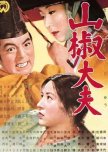
"A man is not a human being without mercy"
Sansho the Bailiff had little to do with the title character and everything to do with two noble children sold into slavery to him. A family torn apart never let the dream die of being reunited one day. They would all have to decide if they should continue doing the right thing when good things happened to bad people and bad things happened to good people.A governor who refuses to let the military conscript and further tax his people who have experienced famine for 13 years is stripped of his title and exiled. Before he leaves, he tells his son to remember that “A man is not a human being without mercy…Everyone is entitled to their happiness.” He gives Zushio the treasured family statuette of Kannon, the Goddess of Mercy to keep with him. His wife Tamaki and the two young children stay for a time with her brother and then determine to make the long trek in search of the father. Along the way they are betrayed in an area rife with bandits and slave dealers. Tamaki is sold into prostitution on a distant island and the children are sold into slavery to Sansho the Bailiff. Sansho is a cruel slave owner who keeps his slaves in a walled compound. Any attempt at escape results in a branding on the forehead. Sansho’s son, Taro, is kind to the children and tells them to endure until they are old enough to escape and make the difficult journey to their father. He then leaves the compound, never to return. As the children age, Anju adheres to her father’s words of wisdom while Zushio abandons them and in a twist of fate becomes the cruel "son" Taro could never be.
Calling out injustice was a familiar theme for Mizoguchi. In this film, the barbarism of forced labor camps was brought forth. More than once, the suffering of the common people was dismissed as unimportant by the affluent leaders. Much as his sister in real life had been, Tamaki was sold into prostitution. Despite the longing and despair of the characters, the scenery was amazing. Cinematographer Miyagawa Kazuo brought great beauty to the black and white film with stunning outdoor shots. Mizoguchi used water in several scenes—a lake and the ocean providing two of the more powerful moments in the film. Sansho’s slave encampment was claustrophobic and filthy, dark with hopelessness hanging over the weary people.
Sansho the Bailiff was based on a 1915 short story which was based on an old folk tale. What is curious about the title of the film was that Sansho was the villain and appeared far less than Zushio and Anju who were sold into slavery to him. Instead of Sansho’s story this was the boy Zushio’s as he grew into manhood. The mother and children were given different names along their journeys of suffering and as they sought to hold onto and rediscover their identities. Zushio’s growth and quest to reunite his family was the narrative backbone to the film. And if his growth was the backbone, Anju’s and Tamaki’s loving persistence was the life-giving blood of the film. Both women had deeply poignant scenes that will linger in my mind. Anju had a devastating scene that far from being melodramatic was like ripples through time that would affect other characters’ lives. And like those ripples the good done by the family members spread ever outward even when the family paid the cost. Sansho the Bailiff juxtaposed man’s cruelty and ability to be merciful, an ongoing battle even now as humankind decides who they want to be when they grow up.
15 April 2024
Was this review helpful to you?

 31
31 98
98 7
7





















